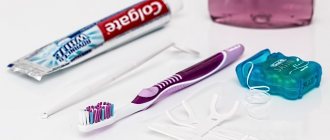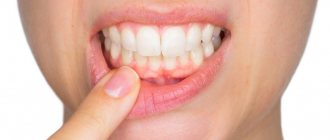Content
- When to remove a tooth
- What is recommended to do
- Stages
- What to do after deletion
- Remove wisdom tooth
- Prevention
- Final recommendations
PROMOTION
Inexpensive tooth extraction
from 1000 rub.
Tooth extraction at home is an unsafe event, as there is a high risk of infection. But there are situations in life when it is not possible to seek qualified help. Is it possible to pull out a tooth yourself and avoid complications?
Where can you go at night if you have a toothache?
Many of us live in big cities, where medicine is at the highest level. But this happens during the daytime and on weekdays, and at night, on holidays and weekends, we feel insecure and sometimes don’t know where to turn for help. For example, with an acute toothache that takes you by surprise and gives you no rest. What to do then? So the journalists from the editorial office of the UltraSmile.ru portal asked themselves this question. Let's look for answers to it together!
It’s good if you always have the city’s emergency and emergency phone numbers at hand, so that in the event of an unforeseen situation you can call and ask all your questions without panic. If there are no important numbers, then call the 24-hour helpline of the city or locality where you are currently located.
24-hour pharmacy
Do you agree that when a tooth hurts, the first thing we think about is not where to run, but how to relieve the pain? And accordingly, we take the right pill. Especially when trouble occurs late in the evening, at night or after hours. I don’t want to go or run anywhere during this period of time. But there are also such situations - you have a toothache, but at that very moment there was no analgesic in your home medicine cabinet: the medicine has run out, the expiration date of the medicine has expired. In this case, it would be a good idea to find out if there is a 24-hour pharmacy in the city and buy a medicine that will relieve unpleasant symptoms for a certain period of time and help you get a restful sleep. This could be Nurofen, Nise, Ketorol, Ketanov, Baralgin.
In the morning, of course, you need to make an appointment with a professional dentist or go without an appointment to any public dental clinic that accepts under the compulsory medical insurance policy.
A 24-hour pharmacy will help if the pain occurs late in the evening or at night
If you are in a village, in a country house, and there are no large settlements nearby, then try using simple folk remedies: a clove of garlic on the wrist, rinsing with soda-salt solution, chamomile, massage.
When none of the listed measures bring relief, then it’s time to think about more serious actions and contact a medical facility.
Urban emergency dental care centers
As a rule, these are ordinary clinics, which are supported by the state and the city, or an emergency room at a regional dentistry, where round-the-clock duty is organized. But even in the largest cities, such as Moscow, there are no more than one or two of them for the entire population. These clinics have an on-call room where you can go to resolve an emergency.
To be accepted at night or on holidays, it is enough to provide an identification document and a compulsory health insurance policy. It does not matter whether you belong to this organization at your place of residence or your official registration. It also does not matter which clinic you are assigned to.
This is interesting: What is incomplete tooth luxation and why does it happen - symptoms and treatment methods
For example, in Moscow there are two night departments: for children under eighteen years of age, you can count on help in emergency cases at Dentistry No. 28. The center’s specialists provide their services free of charge from 18:00 to 8:30 on weekdays. And also at any time of the day or night on holidays and weekends. For adults - emergency admission of all citizens is carried out by the State Budgetary Healthcare Institution 1 "Maxillofacial Hospital for War Veterans", opening hours from eight in the evening to eight in the morning.
Clinics that are supported by the state
For what types of pain and dental pathologies can specialists provide assistance at night:
- relieve acute pain syndrome in any type of dental problem,
- provide first aid for pulpitis, caries, periodontitis, alveolitis and periostitis, the presence of cysts and granulomas,
- stop alveolar bleeding,
- carry out emergency surgical intervention if the patient presents with jaw injuries, fractures and dislocations of teeth,
- remove a tooth: but not in the case of “eights”. Wisdom teeth removal is often considered difficult and requires a thorough diagnosis of the situation. Therefore, depending on the clinical case and the equipment of the clinic, the doctor may recommend that you come for an appointment during the daytime and make an appointment (although in case of an emergency, city clinics accept patients without an appointment).
Services here will be provided free of charge. The only thing you may need to pay for is an imported anesthetic injection before treatment.
I am shocked by our city clinic in Chita. We arrived at night, there were four people in line for one doctor, we sat there for two hours. The pain was unbearable, the pills did not help. At the same time, the tooth was intact, there wasn’t even a filling on it, and it was unclear why it hurt. The doctor was rude and said, why are you coming here! You'd think we have nothing else to do at night! Without even looking properly, without x-rays and everything else, she offered to pull the tooth and pay 300 rubles for anesthesia!!! But shouldn’t modern dentists do everything to save the patient’s teeth and how can they be removed without even conducting a normal diagnosis? This is our free medicine and emergency care. The question arises: why be on duty at night if there is only one answer to all situations: we will delete them!
Private dentistry
Acute toothache caught you by surprise at night? People who do not want to spoil their nerves immediately understand where to go: private dental offices or clinics that work around the clock. Here, the service for dental treatment and pain relief, in most cases, will have to be paid according to the current price list. But help will be provided in a timely manner, without unnecessary hassle or questions, and you will feel comfortable.
Some private dentistry may provide free services under the compulsory medical insurance policy, but most often in such cases they ask to provide one more document: SNILS.
You can contact 24-hour private dental clinics
Also, most private dental centers have uninterrupted 24-hour and toll-free communication lines for support and consultation of patients. Therefore, you can always call such a service and get clear recommendations on how to proceed.
Regular trauma center
If there are no 24-hour dentists in your city, then there are definitely trauma centers. Yes, the doctors on duty are not dentists and will not be able to cure your tooth, but they will be able to select medications that will relieve acute pain and help you last until the morning.
Help can also be provided at a trauma center.
If an institution operating in accordance with health care standards and providing services under the compulsory medical insurance policy refuses to accept you in an emergency, then you can directly contact the hotline of the City Health Service or the Ministry of Health of Russia, multi-channel telephone2.
Ambulance or urgent care
This option is suitable only for those people who have suffered dental problems and pain as a result of maxillofacial injuries, accidents and falls. In all other cases, the ambulance dispatcher will refuse hospitalization and, as practice shows, will not respond to the call. But the specialist will be able to tell you which institutions in the city you can contact with your problem or give advice on how to relieve toothache before your next visit to the dental clinic.
Sources
- https://melioradent.ru/stati/vyrvat-zub-v-domashnih-usloviyah/
- https://zubast.ru/zuby/kak-vyrvat-korennoj-v-domashnih-usloviyah.html
- https://stomatolab.com/lechenie/udalenie/zuba-v-domashnix-usloviyax.html
- https://MedBoli.ru/zabolevaniya/kak-vyrvat-zub-v-domashnih-usloviyah-bez-boli
- https://ultrasmile.ru/kuda-obratitsja-nochju-esli-bolit-zub/
When Removal is Required
Doctors recommend removal if:
- The tooth is destroyed to such an extent that filling will not solve the problem;
- With exacerbation of osteomyelitis;
- In the inflammatory process associated with infection;
- With advanced periodontitis;
- If the tooth is positioned incorrectly;
- If the jaw is damaged;
- With severe looseness;
- If a dental unit interferes with prosthetics;
- With severe caries damage.
There are rules to minimize the consequences of self-removal of a problematic tooth.
Methods for painless removal in dentistry
When asked how to extract a tooth without pain, doctors answer that today there are different methods that allow the procedure to be carried out as comfortably as possible for each patient and at the same time take into account all his individual characteristics.
Under local conduction or infiltration anesthesia
This is the most common way to pull a tooth without pain. First, the specialist finds out whether the patient has any contraindications or allergies to certain medications, chronic diseases such as diabetes, hypertension, or pathologies of the cardiovascular system. Depending on your condition, the doctor will select the most effective and, importantly, safe medicinal composition. Before giving the injection, the dentist will treat the gums with “freezing” so that even the process of inserting a needle into the soft tissues does not cause discomfort.
The procedure can be performed under local anesthesia
Do not start dental problems and do not lead to an acute purulent-inflammatory process, because in this case the effect of any anesthesia will be less effective. Also, you should not take painkillers from your home medicine cabinet before going to the doctor, as the effect will be similar: to relieve pain before surgery, a larger dosage of the drug and more time may be required.
Most often, for a procedure such as extraction (removal), doctors use infiltration anesthesia, when the drug is injected into the periosteum or bone. But if extensive surgical intervention is planned, for example, several or many elements need to be removed at once, then conduction anesthesia is used. Then the medicine is injected into the nerve, numbs a large area and acts for a longer time.
In modern dentistry, carpule syringes1 are used to administer anesthesia, inside of which there is a special recess for an ampoule with an anesthetic. Compared to conventional disposable ones, these syringes have a thinner needle and allow you to administer the medicine slowly and painlessly.
Under sedation
This option is ideal for those who are not only thinking about how to pull out a tooth without pain, but also for those who are very worried about this and cannot overcome their fears, even while at home. The use of sedation does not cancel the preliminary administration of the anesthetic, but helps to calm down, get rid of anxiety and stress. During the operation under sedation, the patient relaxes, but remains conscious and can follow all the doctor’s commands.
The procedure can be performed under sedation
Read the article on the topic “4 reasons why sedation in dentistry is one of the best methods of pain relief.”
There are several options for sedation:
- intravenous: the relaxant enters the body through a vein,
- oral: the drug is diluted in a drink, which should be drunk an hour before surgery. Most often this option is used to treat children,
- inhalation: a mask is put on the patient’s face, through which medical xenon or nitrous oxide with oxygen is supplied.
Sedation is prescribed not only for those who are very afraid, but also for people with pathologies of the cardiovascular system and high blood pressure.
Under general anesthesia
Doctors advise never to think about how to remove a tooth yourself. It is better to turn to dentistry, where today they will find a solution even in the most difficult clinical situation, for example, when classical local anesthesia does not work or is contraindicated, or when it is necessary to remove a large number of units at once.
The essence of general anesthesia comes down to the fact that the patient is put to sleep with the help of special drugs (the most common are Sevoran and Diprivan). He sees, hears and feels nothing. And this is a big plus, which relieves not only pain, but also fear.
In difficult cases, general anesthesia is used
However, the procedure also has certain disadvantages: treatment under anesthesia requires thorough preparation and tests; after the procedure, the patient takes a long time to come to his senses, he may experience weakness and dizziness. To perform an operation, the clinic must have an anesthesiologist and a ventilator.
Preparatory stage
To reduce risks as much as possible, you must:
- Brush your teeth;
- Rinse your mouth with balm, calendula tincture or chlorhexidine.
- Take a painkiller and wait half an hour.
Prepare:
- Antiseptics;
- Spitting container;
- Tampons and sterile gauze pads;
- Mirror.
The use of pliers and similar tools is prohibited.
Sequence of actions if you need to pull out a tooth at home:
- Cover the tooth with sterile gauze, grasp it tightly and slowly loosen it to remove it from the socket;
- Use tampons to remove accumulated blood;
- Act slowly and forcefully so that no root fragments remain in the hole;
- After extracting the tooth, apply a tampon to the wound and bite it firmly;
- After half an hour, carefully remove the tampon so as not to provoke bleeding.
Do not drink or eat for the next 4 hours. Apply cooling compresses for several minutes. In the next few days, eliminate bad habits and do not use physical activity.
How to pull out a tooth without pain at home?
At home, you can pull out both a baby tooth for children and a molar tooth for an adult.
This applies to:
- fangs;
- chewing (“fives”, “sixes”, “sevens”);
- anterior incisors;
- rotten areas.
The main thing is to strictly follow the basic rules of such a procedure at home and monitor sterility.
Removing a baby tooth for a child
Children are most afraid of doctors, especially dentists. For this reason, the extraction of primary incisors or canines occurs at home. There are ways that help not to injure the baby and protect the child from stress as much as possible.
Pulling without thread
To make a loose tooth fall out faster, you need to loosen it with your hands and quickly pull it out. If the child is not able to do this, you can tell him a fairy tale about the tooth fairy or come up with a game in which he must gradually loosen the diseased incisor himself. Captivated by the new activity, the baby will tolerate the removal process more calmly and will be less afraid of similar procedures in the future.
Before removal, the baby tooth must be loosened
Method with thread
You will need a strong thread 20–30 cm long. One end must be tied to the base of the incisor (fang), and the other must be picked up. At this time, it is important to distract the child with an interesting story, a toy (something like a helicopter or a car will take a tooth and bring a gift in return), and make a sharp movement of the hand towards you. It is important to pull it yourself, without tying the thread to doors or other objects, as older people like to advise.
It is important not to touch the skin and gums with the rope, otherwise you can injure soft tissues, cause open wounds and bleeding.
You need to pull the thread yourself, and not tie it to doors and other objects
After completing the procedure, the child should thoroughly rinse the mouth (with Chlorhexidine) 3-5 times a day for a week. Immediately after removal, apply a cotton pad or gauze swab to the wound. Eating is allowed after 2-3 hours. It is better to start with liquid food (vegetable and fruit purees, yogurt, kefir).
Pulling out molars
It is more difficult to remove permanent teeth on your own than baby teeth. The root is deeply embedded in the bone tissue, and even a loose fang or incisor is not easy to pull out painlessly. To avoid undesirable consequences (infection in the wound, injury to neighboring teeth, inflammation), removal should be carried out if the tooth is very loose and has practically fallen out on its own.
- Depending on the location of the object of removal (front incisor, canine, chewing), it must be wrapped with gauze on both sides.
- The procedure should be carried out slowly, gradually loosening the tooth, and periodically trying to pull it out of the gums. Slow movements ensure safe removal of the injured area without splinters.
- Apply a swab soaked in antiseptic to the wound and squeeze your jaw tightly.
The molar needs to be gradually loosened before removal.
If you take an analgesic and lubricate the gums with an anesthetic gel, pulling out a tooth will not hurt.
During the procedure, blood may ooze from the injured area. You need to wipe it with a gauze cloth, pre-treated in an antiseptic solution.
To avoid swelling and bleeding, after extracting the tooth, the mouth should be rinsed with a disinfectant, and a cold compress should be applied to the cheek for 5–7 minutes (longer cannot be, otherwise the sore spot may become cold). It is better to eat food after 4-5 hours. This will allow the wound to heal a little and will not provoke repeated bleeding.
Wisdom tooth removal
Wisdom teeth or “eight” teeth are very difficult to remove, as they have deep roots and are awkwardly located on the jaw. It is unrealistic to pull it out for someone, much less for yourself. Even if you follow the instructions correctly, you can seriously harm your health - crumble a tooth, leave root fragments in the gum, and damage the bone tissue of the jaw. All this can lead to severe inflammatory and purulent processes. Therefore, wisdom teeth should only be extracted in a hospital by highly qualified specialists.
Important! Regardless of which tooth needs to be removed, it is important to remember that pulling out should only be done if it is very loose. Under no circumstances should you use forceps or pliers, otherwise you can damage the gums or break the root, leaving part of it inside.
Actions after removal
It is necessary to monitor the patient's condition for several days.
Negative manifestations if:
- The wound bleeds an hour after removal;
- There is clouding of consciousness;
- The person has a fever;
- The pain has become pulsating in nature - an urgent examination by a dentist is necessary, as a jaw injury is possible.
The difference in how to pull out a molar at home or a baby tooth is only in the length of the roots. To minimize negative consequences, it is necessary to work in gloves treated with an antiseptic composition.
Is it expensive to remove a tooth root?
The cost of treatment depends on the location of the clinic and its status. Also a decisive factor is the qualifications and experience of the doctor. As a rule, the price includes:
- diagnostic measures at the preparatory stage;
- consultations with a dentist, anesthesiologist and other specialists;
- painkillers;
- the cost of the operation itself;
- materials used, etc.
Wisdom tooth removal
If pulling out a baby tooth at home is not a particular problem, then with a wisdom tooth things are different. This dental unit can be removed only if it can be firmly grasped and loosened. Cutting the gum is prohibited so as not to damage the nerve of the lower jaw. For convenience, you need to place a tampon between your gum and cheek. “Eights” have longer roots, so independent removal is almost impossible. This procedure must be performed in a specialized institution.
When it is prohibited for an adult or child to pull out a tooth at home:
- If the gums are very swollen and there is no way to act carefully;
- With purulent abscess, with gumboil;
- If a person has a fever;
- If the tooth is crumbled;
- With excessive sensitivity.
When should you not remove a tooth yourself?
You should not resort to independent manipulation in cases where the patient experiences additional symptoms:
- the gums are very swollen, while the inflammatory process spreads to other areas; during manipulation, due to swelling, you may not see all the tooth fragments, which will ultimately lead to increased inflammation;
- there is a gumboil or a purulent abscess next to the diseased tooth; this may also be a symptom of a cancerous tumor of the gums or periosteum;
- the patient is diagnosed with fever;
- the tooth is severely crumbled and it is difficult to pick up all its walls, in this case the chance of increased inflammation and swelling of the entire mucous membrane also increases significantly;
- the patient is overly sensitive and has a low pain threshold, in which case tooth extraction can provoke loss of consciousness, increased blood pressure and even heart problems, which can only be treated in a hospital.
Tooth extraction should not be performed if the tooth tumor is severe.
Attention! It is especially important to exclude the presence of cancerous tumors in the oral cavity. As soon as the tooth is removed, the tumor and pathogenic cells begin to multiply several times faster. In this case, the patient may mistake pain due to oncology for an inflammatory process, without rushing to see a doctor.
Prevention of complications
The difficulty of the procedure is to avoid infection, since if microbes enter, complications will affect the entire oral cavity. To speed up wound healing, you need:
- When talking, try not to touch the hole;
- Monitor the integrity of the blood clot, which performs a protective function;
- For the first 4 hours after removal, do not eat, chew on the healthy side;
- Brush your teeth carefully and thoroughly, avoiding the socket so as not to damage the blood clot;
- Include food with plenty of liquid in the menu;
- Avoid cold and hot dishes;
- After eating, rinse your mouth with clean water or furatsilin solution to neutralize oozing blood;
- Apply warm, damp compresses to stimulate blood circulation.
Swelling may occur immediately after removal. If pain and swelling disappear within a few days, it means healing is proceeding normally.











